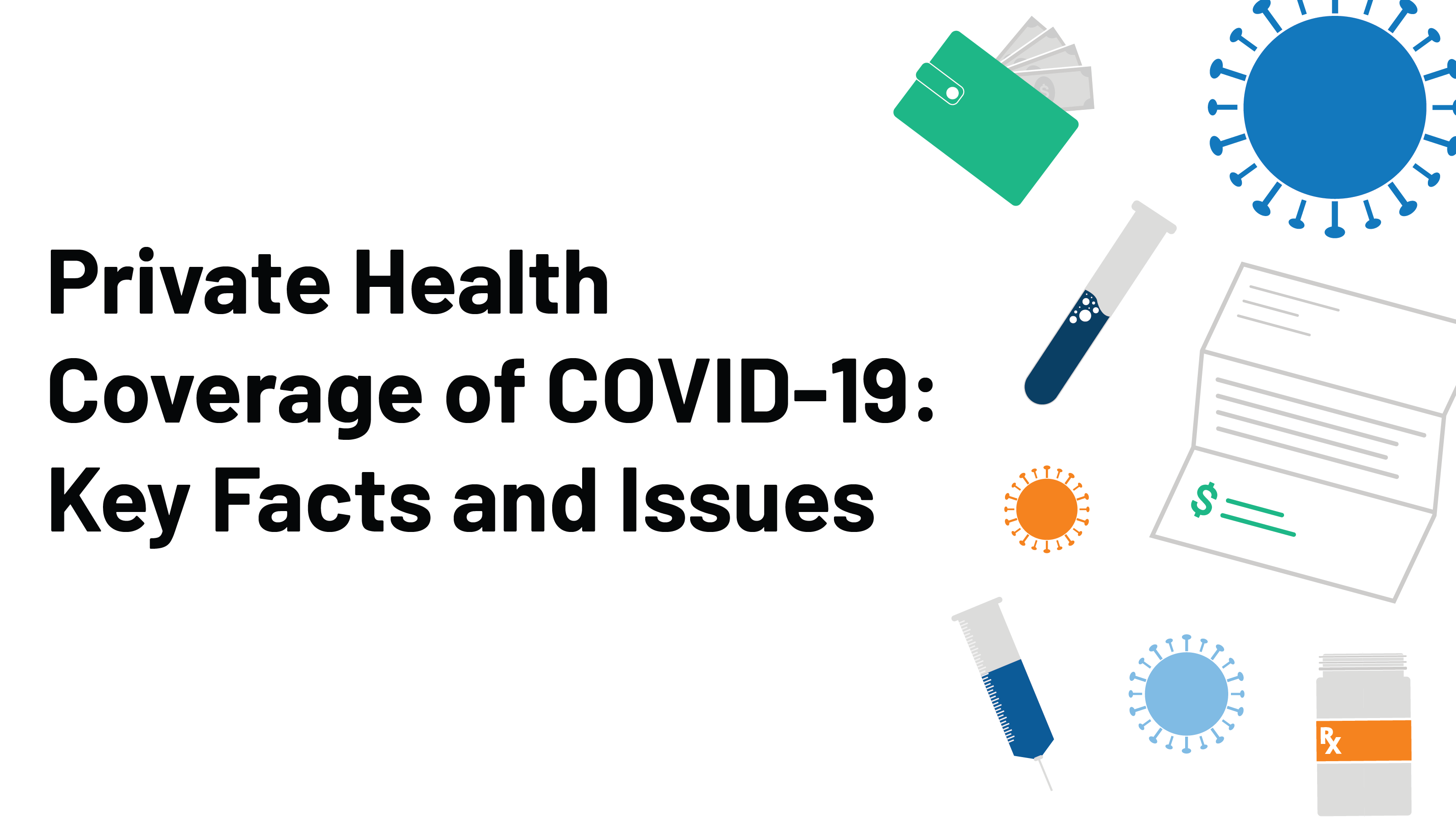Explain a Key Difference Between Self-insurance and Large Deductible Plans
Instead of buying a car insurance policy from an auto insurance provider like GEICO youre providing your own insurance. The principal aim of Self-Insurance is to improve a companys operating profits by reducing its claims and premium costs.

Private Health Coverage Of Covid 19 Key Facts And Issues Kff
Removing the insurance carrier also means that the employer is open to much higher risk than they would have been under a fully-insured plan.

. Self-insured car insurance is an alternative type of auto insurance. Individual health insurance plans require more planning. If a person needs any medical service outside of that they must pay the full deductible before they receive coverage.
However self-insurance does come with a high level of risk and liability. HDHPs typically cover all preventive in-network care in full before the deductible is met. We want to preface this article by.
With the rising cost of healthcare becoming a larger issues for businesses of all sizes its never been more critical for wellness professionals to know the pros and cons of these two popular. High Deductible Health Plan HDHP. Self-insurance is also called a self-funded plan.
Deductibles erode the limit of your insurance policy while SIRs dont. In some cases individual insurance can be difficult to obtain at any price. Comparisons between other available alternate funding options like guaranteed cost large deductible self insured and even captive insurers must be made before making the commitment to proceed with a workers compensation retrospective rating plan.
Like fully self-funded insurance captive insurance is a risk mitigation strategy whereby a company insures itself against future losses. Youre allowed to self-insure your vehicle in most states. Consequently a policy which has a sum insured of 1m and a deductible of 100000 will pay a maximum of 900000 whereas by contrast were it to sit above a SIR of 100000 then the maximum recoverable would be 1000000.
People with pre-existing previously diagnosed or treated health problems seeking. These plans are often more flexible for you as the employer because you may not. Additionally self-insured health plans help you save significantly on premium costs.
Totally self-insured plans are rare because of the risk of catastrophic claims. The insured is required to provide a letter of credit or some other form of security with self-insurance while a large deductible does not generally require any form of security. This option is cheaper for employers because they do not have to pay for the separate insurance carrier.
A good broker will guide you through the decision making process. If your deductible is 3000 and you need a medical procedure that costs 2500 youd be responsible for the entire amount. With a fully insured plan the risk falls on the insurance company.
This is a type of plan in which an employer takes on most or all of the cost of benefit claims. Individual health insurance plans were designed to provide insurance to unemployed or self-employed persons not covered under their employers plan. Students may or may not realize that the deductible on an auto insurance policy is a type of self-insurance where people assume a specific amount eg 500 of dollar loss.
Under a large deductible the insurer adjusts and pays all claims and with self-insurance the insured is responsible for adjusting and paying its own losses up to the attachment point of excess. Each state has its own laws and regulations pertaining to health insurance and. By assuming the role of an insurer costs such as the overheads for policy administration the assumption of risk and underwriting profit are retained by.
Preventive services provided in-network are typically covered 100 by the insurance company even before you meet the deductible. A high-deductible health plan HDHP is a health insurance policy that has a lower monthly premium and a higher deductible. Fully funded plans are those that are offered for sale by an insurance carrier who assumes all of the risks and pays all of the claims.
The Advantages of Self-Insurance. Self-funded plans are more flexible than traditional fully-insured plans because theyre less regulated and give you the opportunity to design a healthcare plan to meet your employees unique needs. Self-insured health insurance plans are not subject to state insurance laws and oversight.
The monthly premium is usually lower but you pay more health care costs yourself before the insurance company starts to pay its share your deductible. The insurance company manages the payments but the employer is the one who pays the claims. Some plans have a 0 deductible for covered services.
Personally ie self-insurance and 4. With an SIR youll be forced to pay the first 50000 of the loss before the policy will respond and cover the remaining 50000. In our example a deductible policy would have the insurer cover the 100000 loss and then collect payment of 50000 from you afterward.
In a captive insurance arrangement however the insured creates a more formal arrangement for insuring against its unique business risks via the creation of its own insurance company. A plan with a higher deductible than a traditional insurance plan. In recent years the need to curtail healthcare spending has given rise to an increasingly popular method self-funded health insurance.
Transfer the risk of loss to an insurance company. Instead theyre regulated at the federal level under ERISA the Employee Retirement Income Security Act and various provisions in other federal laws like HIPAA and the ACA. There are key differences between individual and group insurance plans.
HMOs offered by employers often have lower cost-sharing requirements ie lower deductibles copays and out-of-pocket maximums than PPO options offered by the same employer although HMOs sold in the individual insurance market often have out-of-pocket costs that are just as high as the available PPOs. Larger employers are much more likely to have a self-funded plan. With self-insured car insurance you provide your own car insurance.
For example one of the most important topics for a growing company is the key differences between fully-funded and self-funded insurance plans. We explain why more employers are making the shift. Group health insurance coverage for an employee usually starts shortly after you hire a new employee that is a major consideration because new hires know when they will have coverage.
Self-funded health insurance can offer greater flexibility control and cost-saving opportunities. It is more common for larger businesses to be fully insured than businesses with thousands of employees due to cost. One of the biggest differences between fully insured plans and self insured plans is who assumes all the risk.
Although policies can vary in general a deductible plan will pay up to a certain amount including the deductible. They may need to be prompted to consider this. Self-insurance also known as self-funding allows small business owners to create and manage their own insurance plans without being subjected to the restrictions and costs of working with larger traditional insurance carriers.
Self-funded plans are those wherein an employer assumes all insurable risk and pays claims through a third party administrator. A new employee must generally shop for a plan and purchase during the nationwide Obamacare open.

Here S Why Your Workplace Health Insurance Is So Expensive
:max_bytes(150000):strip_icc()/homeowners-insurance-guide_final-88e7d3469dcc4920977498f08564b234.png)
Homeowners Insurance Guide A Beginner S Overview

Explaining Health Care Reform Questions About Health Insurance Subsidies Kff
:max_bytes(150000):strip_icc()/dotdash-life-vs-health-insurance-choosing-what-buy-Final-b6741f4fd8a3479b81d969f9ea2c9bb3.jpg)
Comments
Post a Comment